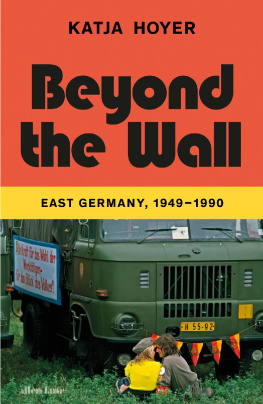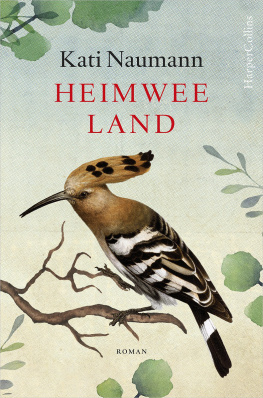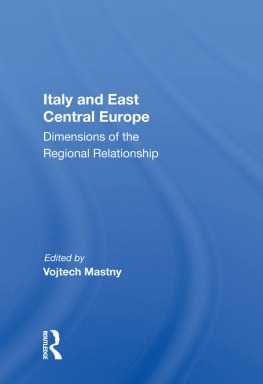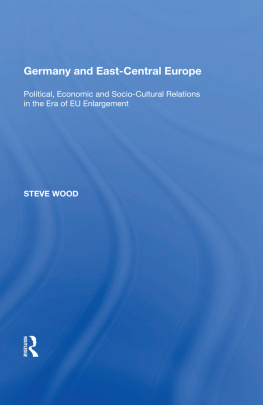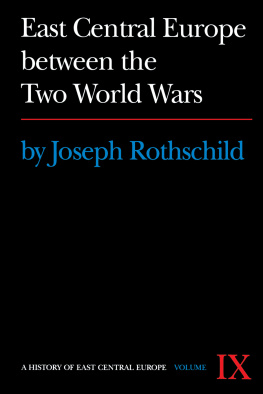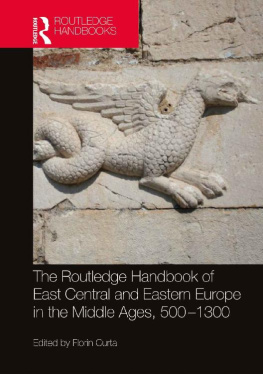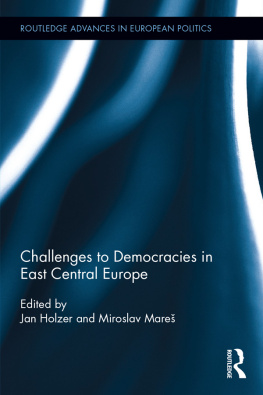Katja Castryck-Naumann - Transregional Connections in the History of East-Central Europe
Here you can read online Katja Castryck-Naumann - Transregional Connections in the History of East-Central Europe full text of the book (entire story) in english for free. Download pdf and epub, get meaning, cover and reviews about this ebook. year: 2021, publisher: De Gruyter, genre: Politics. Description of the work, (preface) as well as reviews are available. Best literature library LitArk.com created for fans of good reading and offers a wide selection of genres:
Romance novel
Science fiction
Adventure
Detective
Science
History
Home and family
Prose
Art
Politics
Computer
Non-fiction
Religion
Business
Children
Humor
Choose a favorite category and find really read worthwhile books. Enjoy immersion in the world of imagination, feel the emotions of the characters or learn something new for yourself, make an fascinating discovery.

- Book:Transregional Connections in the History of East-Central Europe
- Author:
- Publisher:De Gruyter
- Genre:
- Year:2021
- Rating:5 / 5
- Favourites:Add to favourites
- Your mark:
- 100
- 1
- 2
- 3
- 4
- 5
Transregional Connections in the History of East-Central Europe: summary, description and annotation
We offer to read an annotation, description, summary or preface (depends on what the author of the book "Transregional Connections in the History of East-Central Europe" wrote himself). If you haven't found the necessary information about the book — write in the comments, we will try to find it.
Transregional Connections in the History of East-Central Europe — read online for free the complete book (whole text) full work
Below is the text of the book, divided by pages. System saving the place of the last page read, allows you to conveniently read the book "Transregional Connections in the History of East-Central Europe" online for free, without having to search again every time where you left off. Put a bookmark, and you can go to the page where you finished reading at any time.
Font size:
Interval:
Bookmark:
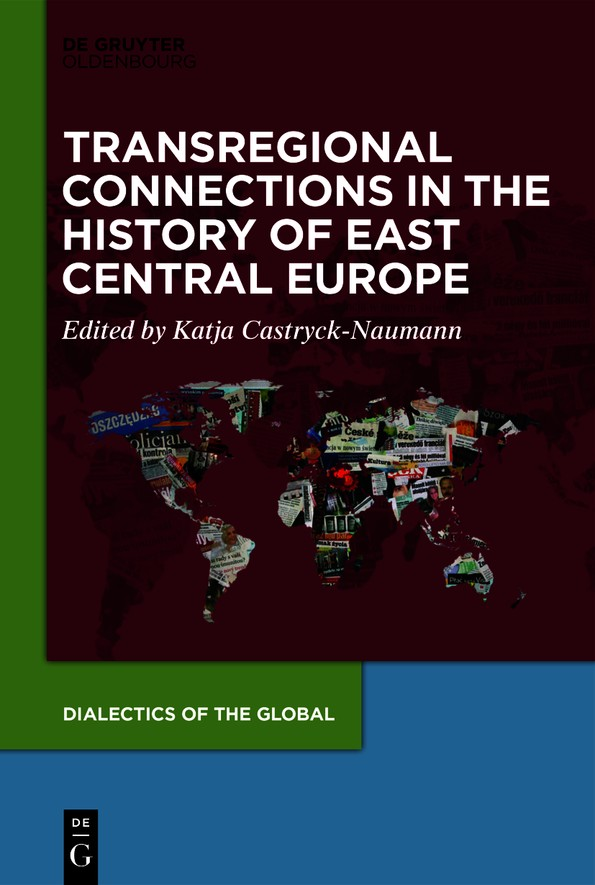
Dialectics of the Global
Edited by
Volume
ISBN 9783110680430
e-ISBN (PDF) 9783110680515
e-ISBN (EPUB) 9783110680560
Bibliographic information published by the Deutsche Nationalbibliothek
The Deutsche Nationalbibliothek lists this publication in the Deutsche Nationalbibliografie; detailed bibliographic data are available on the Internet at http://dnb.dnb.de.
2021 Walter de Gruyter GmbH, Berlin/Boston
This volume examines the history of East-Central Europe as perceived through the study of transregional connections; it introduces developments that embody region-transcending entanglements by demonstrating how people from the eastern and central parts of Europe positioned themselves in a world growing closer together since the middle of the nineteenth century and how they shaped this entangled world. This volume follows how actors embraced global dynamics and challenges as well as how they expressed their concerns in these constellations, thus creating their own connectedness. The contributions sketch out how these entanglements changed over time and which reciprocal effects they had in the region as well as in sites, spaces, and regions to which actors in East-Central Europe were tied. We trace the space-making quality of these multidirectional interactions, among others, by showing how East-Central Europe became a distinct region in the process of transregional interaction. While the contributions offer conceptual reflections and critically discuss long-standing narratives about the regions global positions, above all, they present original empirical work, with research findings that encourage enhancing the study of East-Central Europes connectivity by augmenting the transnational angle with a transregional stance.
Why transregional connections? The observations of three developments encouraged us to examine these. First, while exchange and interactions have been treated as subjects within research concerned with East-Central Europe, the focus here has been so far on links between single societies or countries and on entanglements within the region, while relations with other parts of the world and global contexts have sparked much less interest. Second, while world-wide relations and global processes are at the core of global history, and lately a distinctive transregional approach is being advanced, entanglements are explored, above all, for world regions, such as continents or major empires. Smaller regions, including East-Central Europe, and their specific connectivity have received little attention. Because global historical narratives are imbued with these imbalances, many regional formations, sub-national and supra-national, are not dealt with and thus appear disconnected and marginal. Third, within the field of transnational history, conceptual reflections have recently moved in new directions that differentiate between the various scales of entanglements, and which shift the attention away from connections across state borders, be they national or imperial, to the many other spaces and localities from which they unfolded. This offers inspiration for both histories about East-Central Europe and global histories.
This volume presents history, revealing dimensions of the past so far rarely seen, and it aims to show the potential of the analytical category transregional for understanding historical connections. Yet, the category is not restricted to the study of historical developments; it can also be used to better understand current processes. The realm of international politics is changing, as are politics in East-Central Europe, including politics of history. It seems that in research, connectivity is used to reach for more inclusive histories, while in politics a nationalistic backlash and the rise of populist movements occur, not only in East-Central Europe but globally. Nationalism does not reappear, however, in the form of cutting of all ties to the outside world. Rather, we see a revision of which historical connections are used as reference and legitimization of political agendas and which ones are filtered out. These processes are their own topics for future research, and we think that the study of transregional connections of East-Central Europe can contribute much to that research.
In the following, we will briefly review in greater detail the mentioned trends in historiography and explain how we, in this volume, understand transregional. The second part outlines the discussion about transregional connections in the field of global history and brings to light what can be gained when the study of sub-regions in general, and of East-Central Europe in particular, is integrated. The third part presents new works on the history of East-Central Europe that paves the way towards transregional inquiries, and the last part introduces the articles in this volume.
The largest share of the historiography on East-Central Europe has been intimately associated with the nation(-state) and scholars who have moved away from the national paradigm have first of all explored the border-crossing Be that as it may, connectedness that stretches beyond the lands of the region has been addressed only in passing, including the questions of the regions entangled position in global processes. So far, transnational histories of East-Central Europe have been mostly written from an inward-looking perspective; relations to the wider world remain neglected.
This transnational orientation, however, leads to some challenges. Earlier than other regional specialists, historians working on East-Central Europe reflected on the constructed character of their subject. After all, we are dealing with a space that is neither clearly bounded by natural demarcations nor defined by territory or institutions; instead, it is a space that in many ways is open, fluid, and changing. In particular, the various political and scientific contexts during the eighteenth to early twenty-first centuries, as well as the related widely differing interests and agendas that created East-Central Europe as a distinctive space, have contributed to a departure from essentializing notions. A focus on border-transcending dynamics within Eastern Europe, reflections on the role of connections in the making and remaking of the entire region can be instructive here, and the term transregional in the sense of transforming and transcending the region can be of good use.
Second, transnational histories of East-Central Europe call into question narratives that make strong assumptions regarding the regions fixed position in international relations and global processes, such as the notion of an area in-between East and West or of Orient and Occident. It has been described as rim-lands or bloodlands and as a buffer zone or semi-periphery, and as has been subsumed in a homogenous Eastern bloc during Soviet control in the post-1945 period. and there are many more aspects of regionalization that have led to the creation of smaller or larger spaces in East-Central Europe.
Without doubt, new research fields have emerged that take up such a perspective (which we will return to later). Ultimately, in many societies, political cultures seem to change, and colonial and imperial pasts which even in the countries that were once major empires had vanished from the centre of concerns are recalled. The history of colonialism and its attendant racism, however, can be less aptly discussed in the terminology of the transnational, which can be seen by the previous focus on transnational entanglements within each world region facing accusations for having marginalized colonial projects, ties, and related transregional entanglements for far too long.
Font size:
Interval:
Bookmark:
Similar books «Transregional Connections in the History of East-Central Europe»
Look at similar books to Transregional Connections in the History of East-Central Europe. We have selected literature similar in name and meaning in the hope of providing readers with more options to find new, interesting, not yet read works.
Discussion, reviews of the book Transregional Connections in the History of East-Central Europe and just readers' own opinions. Leave your comments, write what you think about the work, its meaning or the main characters. Specify what exactly you liked and what you didn't like, and why you think so.

